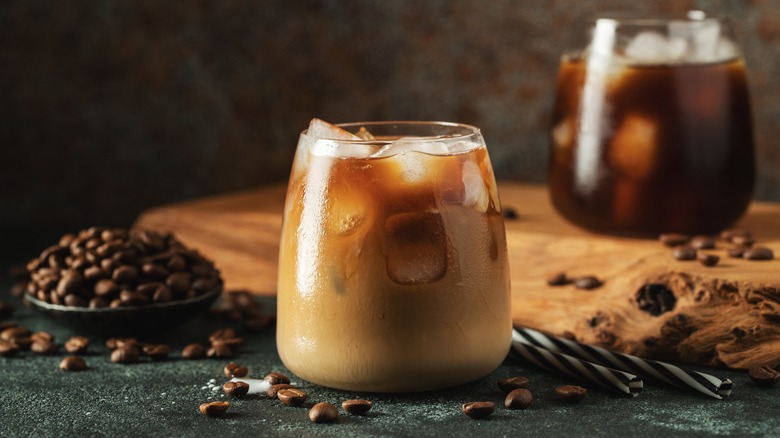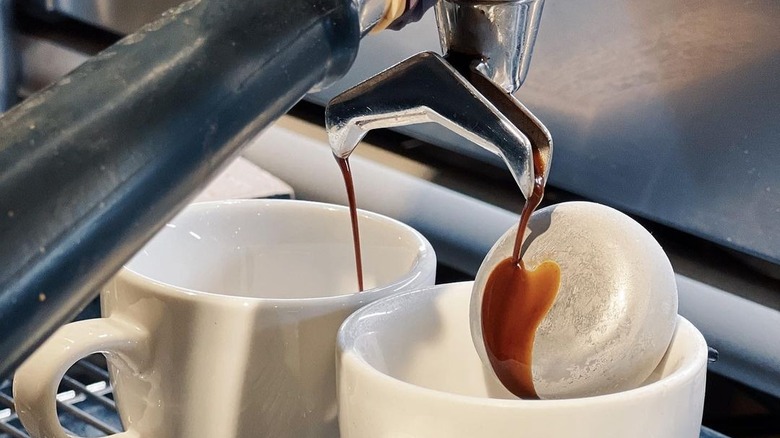How Extract Chilling Ensures A More Flavorful Cup Of Iced Coffee
Espresso-making can quickly get technical — many logistics go into that delicious, viscous coffee. Pulling a perfect shot requires proper tamping, an eye on the right grind size, dosage planning, and the correct water temperature, not to mention the selection of the coffee beans themselves. The understanding of such factors keeps evolving, with new techniques debuted at coffee competitions, which then become part of our daily coffee-buying and coffee-making lives a bit further down the line.
An example of a recently innovated technique for espresso is extract chilling, which premiered at the World Barista Championship in 2021. The method employs a cold metal ball (or other shape), over which the espresso pours directly from the machine, thereby cooling the liquid on impact and also improving the coffee's flavor. There's lots to consider when chilling espresso since you shouldn't pour a freshly brewed espresso over ice as it will turn the taste bitter and become overly diluted.
To remedy this issue, baristas are now pouring espresso over a metal orb that's been cooled in a freezer. The coffee immediately plunges in temperature, but its fruity notes remain intact. It's a clever innovation with a big flavor payoff.
Extract chilling uses cold metal to instantly cool coffee
Extract chilling is ideal for crafting various iced coffee drinks. Whether it's a chilled latte, a newly in-fashion espresso tonic, or iced americano, this technique brings more of the coffee's acidity, thereby brightening the beverage. The cold shock functions in the same way as blanching food, meaning you'll taste more of the hot espresso's intrinsic flavor when sipping your iced coffee. The cool temperature preserves more of the volatile compounds in the coffee, preserving the best of the flavor and also giving a silkier mouthfeel.
And while the metal balls certainly look cool, you don't need to buy fancy tech for the technique. A large metal spoon — especially an insulated one meant for ice cream — can function as a substitution. Plus, some baristas even cool the portafilter itself (that's the part of an espresso machine with a handle), which is considered the predecessor of extract chilling.
The method actually came about not for crafting iced coffee but to improve the flavor of freshly extracted espresso. Taiwanese barista Berg Wu — who debuted the technique during a competition in 2016 — discovered that both the texture and flavor of espresso were enhanced when the portafilter was chilled. Baristas subsequently kept tinkering with the method and found that using chilled metal after extraction was easier. And so, a new way of cooling espresso emerged.

